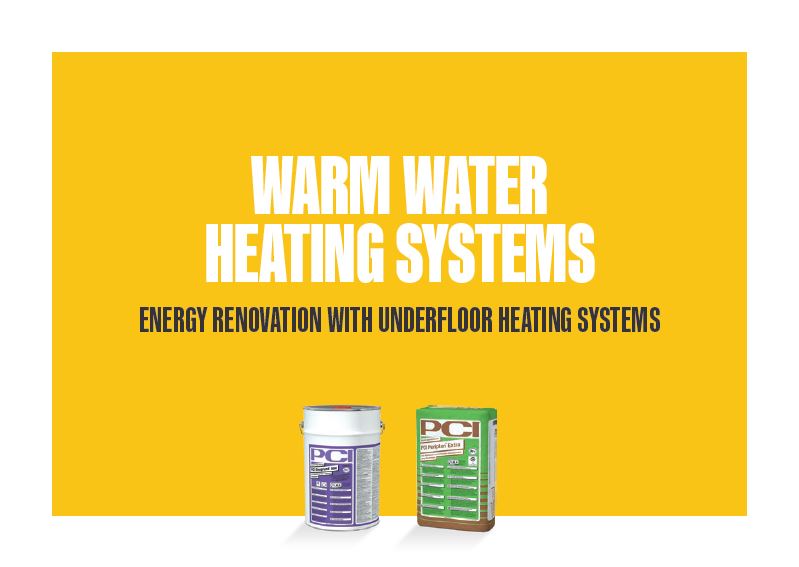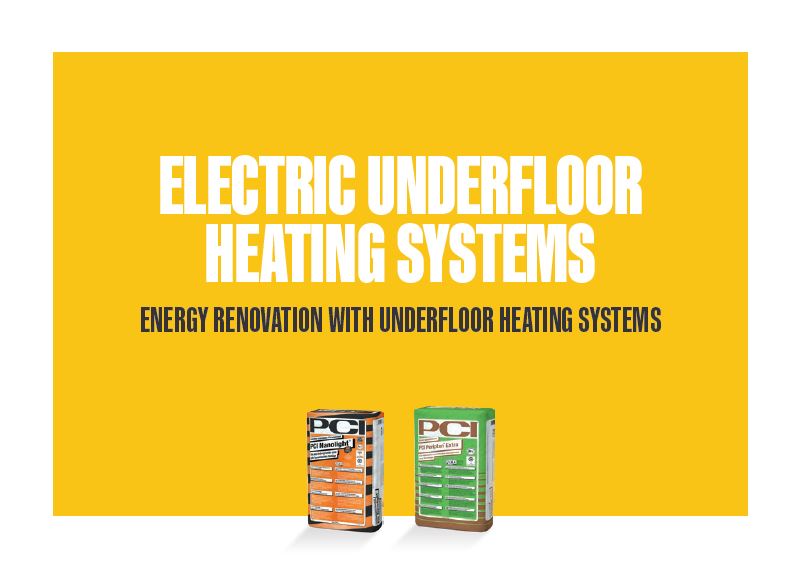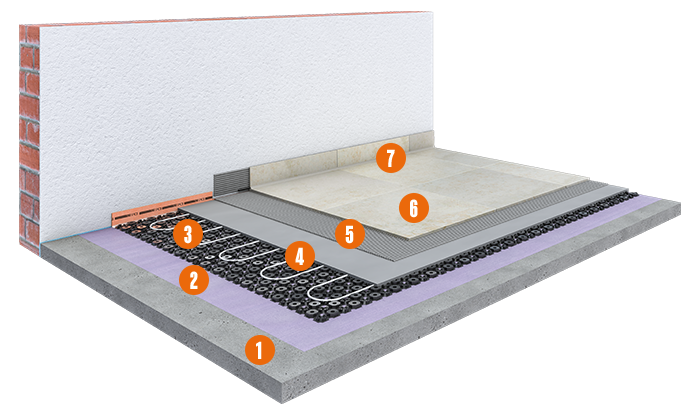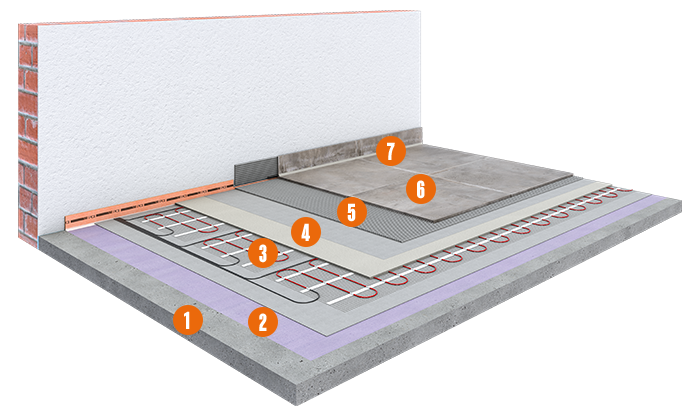LOW-PROFILE WARM WATER HEATING SYSTEMS
Systems of this type of are simply installed directly on the existing substrate.
Self-adhesive compact panels are positioned on the floor and the heating pipes are clipped into place on the panels. A thin layer of leveling compound is then applied. This performs the function of a traditional radiator.
1. Substrate:
Existing substrate (clean and firm) e.g. screed, old tiling, wooden flooring
2. Primer:
PCI Gisogrund 404 – wash primer for absorbent and non-absorbent substrates
3. Installation:
Laying compact panels and clipping heating pipes into place
4. Leveling:
PCI Periplan Extra – Leveling compound for critical substrates under top coverings
5. Laying:
PCI Flexmörtel S1 Flott – Flexible flowable adhesive, especially for large-format floor tiles
PCI Nanolight – Multi-use light, flexible adhesive for all substrates and all ceramic coverings
6. Grouting:
PCI Nanofug Premium – Multi-use, flexible joint grout for all tiles and natural stones
7. Joint sealing:
PCI Silcofug E – Elastic silicone sealant, acid-curing






ELECTRIC UNDERFLOOR HEATING SYSTEMS
With this type of underfloor system, electric cables are laid direct on the substrate. Often, these cables are attached to a fabric.
Depending on the manufacturer, these heating mats may either be bonded using tile adhesive or fixed in place using dowels. Self-adhesive mats are also available. The total height of the system depends on the thickness of the heating cable, which may vary between 2 and 8 mm depending on the manufacturer.
1. Substrate:
Existing substrate (clean and firm) e.g. screed, old tiling, wooden flooring
2. Primer:
PCI Gisogrund 404 – Wash primer for absorbent and non-absorbent substrates
3. Installation:
Installation of heating mats in accordance with manufacturer’s instructions
4. Fixing/leveling:
Fixing:
PCI Nanolight – Multi-use light, flexible adhesive for all substrates and all ceramic coverings; for fixing heating mats in place and, in the case of smaller surfaces, for leveling the surface
Leveling:
PCI Periplan Extra – Leveling compound for critical substrates under top coverings
PCI Periplan Flow – Flowable leveling compound for use under all top coverings
5. Laying:
PCI Flexmörtel S1 Flott – Flexible flowable adhesive, especially for large-format floor tiles
PCI Nanolight – Multi-use light, flexible adhesive, for all types of substrates and ceramic coverings
6. Grouting:
PCI Nanofug Premium – Multi-use, flexible joint grout for all tiles and natural stones
7. Joint sealing:
PCI Silcofug E – Elastic silicone sealant, acid-curing



4. Fixing with PCI Nanolight and leveling with PCI Periplan Extra or PCI Periplan Flow

5. Laying with PCI Flexmörtel S1 Flott or PCI Nanolight


MILLED SCREED UNDERFLOOR HEATING
This system does not require any additional height. Grooves for the warm water heating pipes are milled in the existing screed.
Before the new top covering is laid, the grooves must be filled or leveled.
1. Substrate:
Existing substrate (clean and firm) e.g. screed
• Remove old coverings and create a clean screed surface
2. Installation:
Mill grooves in existing screed. Insert warm water heating pipes when the primer has dried
3. Primer:
PCI Gisogrund 404 – Wash primer for absorbent and non-absorbent substrates
4. Filling/leveling:
PCI Periplan Extra – Leveling compound for critical substrates under top coverings
PCI Periplan Flow – Flowable leveling compound for use under all top coverings
5. Laying:
PCI Flexmörtel S1 Flott – Flexible flowable adhesive, especially for large-format floor tiles
PCI Nanolight – Multi-use light, flexible adhesive for all types of substrates and ceramic coverings
6. Grouting:
PCI Nanofug Premium – Multi-use, flexible joint grout for all tiles and natural stones
7.Joint sealing:
PCI Silcofug E – Elastic silicone sealant, acid-curing



4. Filling/leveling with PCI Periplan Extra or PCI Periplan Flow



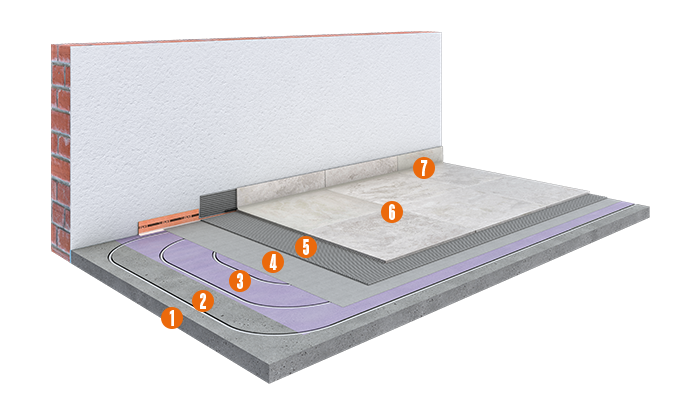
One system – many benefits:
■ No need to remove existing screed
■ No additional height required as heating pipes are laid in the milled grooves
■ Energy-efficient and environmentally compatible as a result of conversion to underfloor heating with a low flow temperature

